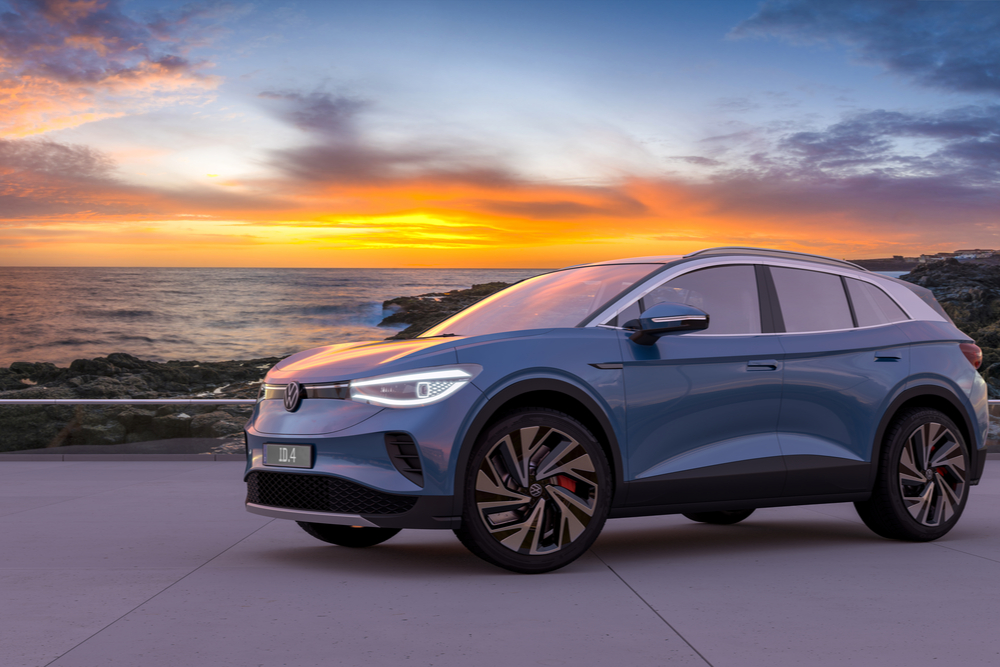Motoring correspondent Mark Gallivan talks to Swedish car giant Volvo about its electric car strategy and how it is driving the battery-powered electric vehicle (BEV) future.
Despite the supply chain woes suffocating global car production from a shortage of semiconductors Volvo Cars has posted best first-half financial results in the company’s 94-year history. The operating income of $1.5bn shored up the company’s 2020 losses with revenues that rose 26pc. Pent-up demand from global lockdown’s saw a 12pc rise in sales to 775,000 new cars in the twelve months to June 2021. This was short of the 800,000 target set ten years ago.
It is a strong performance from the Swedish brand hobbled like many car makers by Covid-19. Retail sales, the bellwether any layperson will understand rose 41pc in the same period.
“There’s only one factor holding back a customer – where the hell do I charge this car?”
Of interest to all Volvo customers is the chunk of new car sales won by the electrifies Recharge range in the lineup. Currently, it accounts for 25pc of the brand’s fleet.
This July, Volvo has entered into an agreement to acquire the companies’ joint ventures in China. This sees an additional 50pc of shares acquired of the Daqing Volvo Car Manufacturing Co. Ltd and Shanghai Volvo Car Research and Development Co. Ltd that is the company’s largest market.
Volvo Car’s chief executive Håkan Samuelsson offered clarity, “With this agreement, Volvo Cars will become the first major non-Chinese automaker with full control over its Chinese operations.” The transactions will be completed in two steps, starting in 2022 when the joint venture requirement for auto manufacturing in China will be lifted. It is expected to be formally completed in 2023.
Despite the strong results challenges with the supply of semiconductors remain. Opinions differ when the return to full semiconductor production will happen and Håkan Samuelsson pulled no punches when he pointed a finger at a larger problem for the group’s electric roadmap, as reported by The Financial Times.
His assessment of electric car production was refreshingly caustic: “There’s only one factor holding back a customer – where the hell do I charge this car?”
Driving into the electric future

Volvo Cars Torslanda recently became company’s first climate neutral car plant.
Manufacturers are falling over themselves to introduce new all-electric (battery electric vehicles -BEVs) cars with scant regard to how they can be conveniently used. Some are building cars that barely scrape 200kms or less real electric range and market them as city-electric cars.
“Since 2019 every new Volvo car launched had an electric motor. Our aim is that 50pc of our annual car sales should be all-electric by 2025, with the remainder consisting of hybrids.”
Some go so far as to suggest you hang onto the current family car for longer trips along with the new BEV. Or if replacing the primary car, buy a second car with a fuller range along with the low range BEV. This directly negates the reason for buying a new BEV with CO2 reductions in the first place.
This poses a bigger question. Is it less harmful to the environment to keep your existing fossil-fuelled car with higher CO2 emissions instead of buying a brand new BEV that attracts the unspoken additional CO2 emissions through the design, sourcing parts from a hundreds of supply partners, transporting the parts through the global supply chain by land sea and air with the environmental cost and investment needed to promote sell and maintain the same new BEV through its full birth to disposal lifecycle. Indeed, could any of us estimate the actual full CO2 saving made to the environment if you chose not to buy that new green car? Of course, we couldn’t. Nobody could.
To its credit, Volvo stands out as a carmaker at has been more vocal that most about the industry’s need for clearer corporate transparency and the profound necessity to make cars that are both safe to drive and better for the environment. To learn more, we asked Volvo Ireland to highlight their view on the electrification landscape.
What is Volvo’s strategy for electrification for the next two-to-five years?

Pure electric Volvo C40 and XC40 recharge at a charging station.
Since 2019 every new Volvo car launched had an electric motor. Our aim is that 50pc of our annual car sales should be all-electric by 2025, with the remainder consisting of hybrids. Volvo plans to have all its cars fully electric is less than nine years. Already the fully electric XC40 Recharge is on sale in Ireland. The electric range of over 400km can be charged up to 80pc in 40 minutes. But that is dependent on finding a fast charger station in the first place.
“In early 2022, we will see the arrival of the C40 Recharge to Ireland which has all the benefits of an SUV but with a lower and sleeker design. It is based on the CMA vehicle platform and the first Volvo model in history designed as pure electric only.” Volvo says further new electric models will hit showrooms after that.
What are Volvo’s climate neural targets?
Our long-term ambition to be climate neutral by 2040 we have a number of short-term targets to immediately reduce our CO2 footprint per car by 40pc in 2025. These reductions also take into account our entire operations addressing CO2 emission across the value chain.” The figures laid bare are stark. These include a 50pc reduction of fleet tailpipe carbon emissions. And a 25pc reduction of the supply chain, operational carbon emissions from manufacturing and logistics.
How would you demystify the different charging speeds at charging stations?
For a generation raised on miles per gallon or the price of a litre of fuel at the pumps getting to grips with the equivalent in electric charging, we asked Volvo to give a simple to understand guide for new BEV buyers.
A 220V household outlet provides 7–14km of range per hour and takes between 36 and 60 hours to fully charge a pure electric Volvo. This charging type is best suited for overnight charging of a plug-in hybrid or supplemental charging to top up a pure electric car. An 11kW 3-phase home wallbox provides 50–60km of range per hour and takes about 8 hours to fully charge a pure electric Volvo. A stationary wallbox is the fastest way to charge your pure electric or plug-in hybrid at home, typically offering 50–60 km of range per hour for the XC40.” Volvo says it takes 3–4 hours to charge a plug-in hybrid. These represent the juice found at charging bays in many public charging stations.
To make the most of the battery life in a pure electric car, we recommend AC charging the battery up to 90pc capacity for typical daily driving, and preferably not letting the charge fall below 20 percent.
DC fast-charging is only available at public charging stations and is mainly used for pure electric cars, mostly on long journeys when time is at a premium. This charging type works at much higher voltage and current. A typical AC charging offers much shorter charging times, though the charging cost is higher. In 10 minutes, you can typically gain up to 100 km of range at a 150 kW station or around 30 km of range at a 50 kW station.”
Main image at top: Håkan Samuelsson, Volvo Cars chief executive



